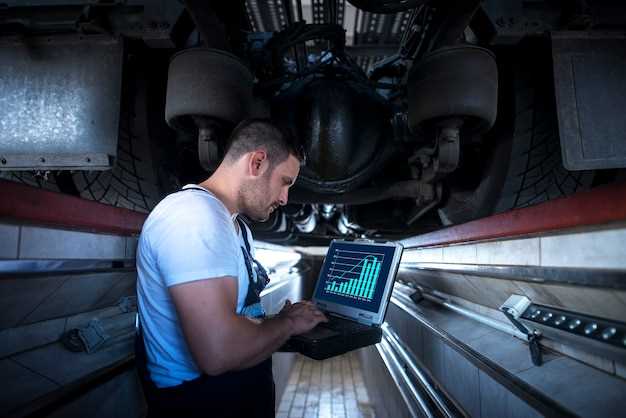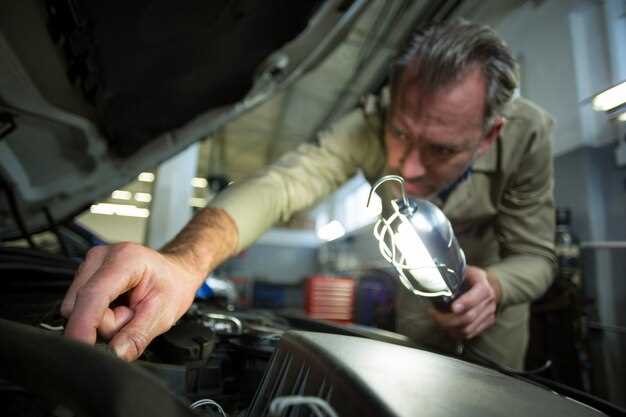
Engine overheating is a critical issue that can arise during high-performance track use, posing serious risks to both vehicle integrity and driver safety. Understanding the causes and diagnosing overheating effectively is essential for any motorsport enthusiast or professional racer aiming to maintain optimal engine performance.
There are several factors that contribute to engine overheating, especially in the demanding environment of a racetrack. The combination of prolonged high RPMs, increased load, and inadequate cooling can lead to significant temperature rises. Identifying the root causes of overheating is crucial, as neglecting to address these issues can result in severe engine damage or failure.
In this article, we will explore the primary symptoms of engine overheating and the diagnostic steps necessary to assess the situation. By examining key components such as the cooling system, oil circulation, and airflow, we can pinpoint the underlying problems that lead to overheating. This knowledge not only helps in immediate troubleshooting but also enhances your overall understanding of engine mechanics during rigorous track use.
Identifying Symptoms of Overheating in High-Performance Engines

High-performance engines are engineered for optimal power and speed, but these capabilities often come at the cost of increased heat generation. It’s crucial to monitor engine health closely during track use to prevent damage. Here are some symptoms to watch for that may indicate overheating:
- Temperature Warning Lights: Many modern vehicles are equipped with dashboard indicators. A warning light signaling high engine temperature is a primary alert to address immediately.
- Steam or Smoke: If you observe steam rising from the engine bay or the smell of burning coolant, these are clear indications that overheating is occurring.
- Loss of Power: An engine may start to lose power or experience a sudden decrease in performance due to excessive heat. This can manifest as sluggish acceleration or reduced throttle response.
- Unusual Noises: Overheated engines can produce knocking or pinging sounds, often due to increased friction or component expansion. Listening for these noises can be an early warning sign.
- Coolant Leaks: Check for puddles under the vehicle or wet spots around the engine. Fluid leaks can occur if the engine heat causes gaskets or hoses to fail.
- Check Engine Light: An illuminated check engine light may be triggered by various issues, including overheating. Always investigate this warning promptly.
Addressing these symptoms promptly is essential to maintain engine health and performance. Ignoring signs of overheating can lead to severe engine damage, costly repairs, and a significant decrease in vehicle reliability.
Ultimately, being aware of these symptoms can help drivers take immediate action, ensuring that their high-performance engines remain in optimal condition during exhilarating track sessions.
Assessing Cooling System Efficiency on the Track

During high-performance track use, the efficiency of the cooling system plays a critical role in maintaining engine health. To effectively assess this efficiency, several factors must be considered. First, the coolant temperature should be monitored. An optimal operating temperature typically ranges between 195°F and 220°F. If temperatures consistently exceed this range, it indicates potential cooling system deficiencies.
Next, inspect the radiator for any obstructions or damage that may hinder airflow. A well-functioning radiator should facilitate maximum heat dissipation. Verify the performance of the coolant pump as well. Insufficient flow can lead to localized overheating, resulting in engine stress and potential failure.
Additionally, the condition of hoses and connections should not be overlooked. Any leaks or weak points can significantly reduce system efficiency. Regular checks for wear and tear ensure that the cooling system operates without interruptions during track events.
Lastly, consider the type of coolant used. Performance-oriented coolants may be necessary for track use to improve heat transfer capabilities. Ensuring your cooling system is performing at its best is essential for sustaining engine performance and longevity under demanding conditions.
Analyzing Engine Load and Its Impact on Temperature
Understanding engine load is crucial for diagnosing overheating issues, especially during track use. Engine load refers to the amount of power being demanded from the engine at any given moment. Higher engine loads typically lead to increased fuel consumption and subsequent heat generation. This heat must be managed effectively to prevent overheating.
During track use, conditions often push the engine to operate under high loads for extended periods. This situation can cause temperature spikes if the cooling system is not adequately prepared. Factors such as high RPMs, aggressive driving, and insufficient airflow can exacerbate the problem, making it essential to monitor engine load closely.
The relationship between engine load and temperature is influenced by various components. For instance, the cooling system, including the radiator, thermostat, and coolant levels, plays a vital role in dissipating heat. If any of these components are compromised, the engine is more susceptible to overheating, particularly under high loads.
Additionally, engine tuning can significantly affect how an engine responds to load. An improperly tuned engine may generate excess heat due to inefficient combustion, emphasizing the need for regular maintenance checks. Performance modifications can elevate engine load without proportional increases in cooling efficiency, which can result in dangerous temperature levels.
To effectively manage engine overheating during track use, it’s important to analyze data from performance monitoring systems. These systems can provide real-time insights into engine load, allowing drivers to adjust their driving style or settings to minimize overheating risks. Understanding how load impacts temperature dynamics enables better preparation and equipment optimization for high-performance conditions.
Ultimately, managing engine load is key to preventing overheating. Adequate cooling measures, proper tuning, and continuous monitoring are essential tactics to ensure that engines remain within safe temperature thresholds during challenging track situations.
Interpreting Dashboard Warnings and Temperature Gauges
Understanding dashboard warnings and temperature gauges is crucial for maintaining engine health, especially during track use where overheating can become a significant issue. Proactively interpreting these indicators allows drivers to take immediate action, potentially preventing severe engine damage.
Dashboard warnings can vary between vehicles, but common symbols include:
- Engine Temperature Warning Light: Typically symbolized by a thermometer, this light indicates that engine temperatures are rising. Immediate attention is required if it illuminates.
- Check Engine Light: This warning may signal a range of issues, including overheating. A diagnostic scan is necessary to pinpoint the problem.
- Oil Pressure Warning: Insufficient oil pressure can lead to overheating by failing to lubricate engine components properly.
Temperature gauges provide real-time feedback on engine health. When assessing temperature readings, consider the following:
- Normal Range: Most engines operate optimally between 190°F and 220°F (88°C to 104°C). Familiarize yourself with your vehicle’s specifications to understand ideal temperature ranges.
- Rising Temperature: A gradual increase can indicate poor cooling system performance. Monitor the situation closely and prepare to pull off the track if necessary.
- Sudden Spike: An abrupt rise in temperature could signify an immediate cooling issue, such as a coolant leak or failure of the radiator. Immediate action is essential.
Regularly check fluid levels–coolant, oil, and transmission fluid–as they significantly affect engine performance and cooling efficiency. Keeping these fluids at optimal levels aids in preventing overheating during intense track scenarios.
In conclusion, paying close attention to dashboard warnings and temperature gauges is vital for maintaining engine health. By ensuring these indicators are regularly monitored, drivers can safely enjoy track use without the risk of overheating-related failures.
Implementing Preventive Measures for Track Days
Preventing engine overheating during track days is essential for ensuring both the performance and health of your vehicle. By adopting proactive strategies, you can minimize the risks associated with high temperatures and maintain optimal operating conditions.
First and foremost, it is crucial to monitor your engine’s cooling system meticulously. Before heading to the track, inspect the coolant levels and ensure that you are using the appropriate coolant mixture for your specific vehicle. This will help enhance heat dissipation and reduce the likelihood of overheating during intense driving sessions.
Another key measure is to install an upgraded radiator or intercooler, which provides increased cooling capacity. Enhanced cooling systems can help manage the engine’s temperature more effectively, especially during prolonged high-performance use. Additionally, consider using high-performance engine oil that withstands higher temperatures, further protecting engine components from heat-related damage.
Regular maintenance plays a vital role in preventing overheating. Check hoses, radiator fins, and the thermostat for any signs of wear or damage that could affect cooling efficiency. Cleaning or replacing air filters can also improve airflow to the engine, contributing to better thermal management.
During track sessions, practice smooth driving techniques to minimize engine strain. Avoid unnecessary high revs or aggressive acceleration that could generate excessive heat. Also, ensure to give the engine adequate cooldown periods between sessions, allowing it to maintain a safe temperature, especially after hard driving.
Finally, consider installing temperature gauges or data logging systems. Monitoring real-time data can alert you to rising temperatures, allowing you to take corrective action before damage occurs. In case of any unusual readings, it’s essential to address the issue immediately to preserve your vehicle’s health.
Evaluating the Aftermath: Ensuring Engine Health Post-Track Use
After an intense day on the track, evaluating the aftermath of engine performance is critical in maintaining the health and longevity of your vehicle. One of the primary concerns is whether the engine experienced overheating during the sessions. Here are essential steps to assess and ensure your engine remains in peak condition.
First, check the engine temperature readings. Utilize diagnostic tools to analyze the engine’s performance data obtained from the track day. Look for any peaks in temperature that may indicate overheating. If you notice abnormal temperature ranges, further investigation is warranted.
Next, inspect the cooling system, which plays a pivotal role in managing engine temperatures. Ensure the coolant levels are adequate and that the fluid is in good condition. Verify that all hoses and connections are intact, with no leaks or wear evident.
It’s also important to evaluate the engine oil condition. Overheating can degrade oil more rapidly, leading to decreased lubrication efficiency. Check for discoloration or contamination, and consider changing the oil if it’s compromised. The table below outlines the recommended oil change intervals based on usage type:
| Usage Type | Recommended Oil Change Interval |
|---|---|
| Daily Driving | 5,000 – 7,500 miles |
| Track Use | 1,500 – 3,000 miles |
| Extreme Conditions | 1,000 miles or less |
Further, perform a compression test on the engine cylinders. Overheating can lead to warping of the cylinder heads or piston ring damage. Low compression values can indicate serious internal issues. Additionally, examining spark plugs for signs of abnormal wear can provide insight into engine health post-track use.
Finally, conduct a thorough engine inspection for any signs of leaks, unusual noises, or vibrations that were not present prior to track use. Key components such as the radiator, water pump, and thermostat should also be assessed to ensure they function optimally. Taking these precautionary measures will not only help in diagnosing any potential damage from overheating but also ensure the engine remains reliable for future track days.




